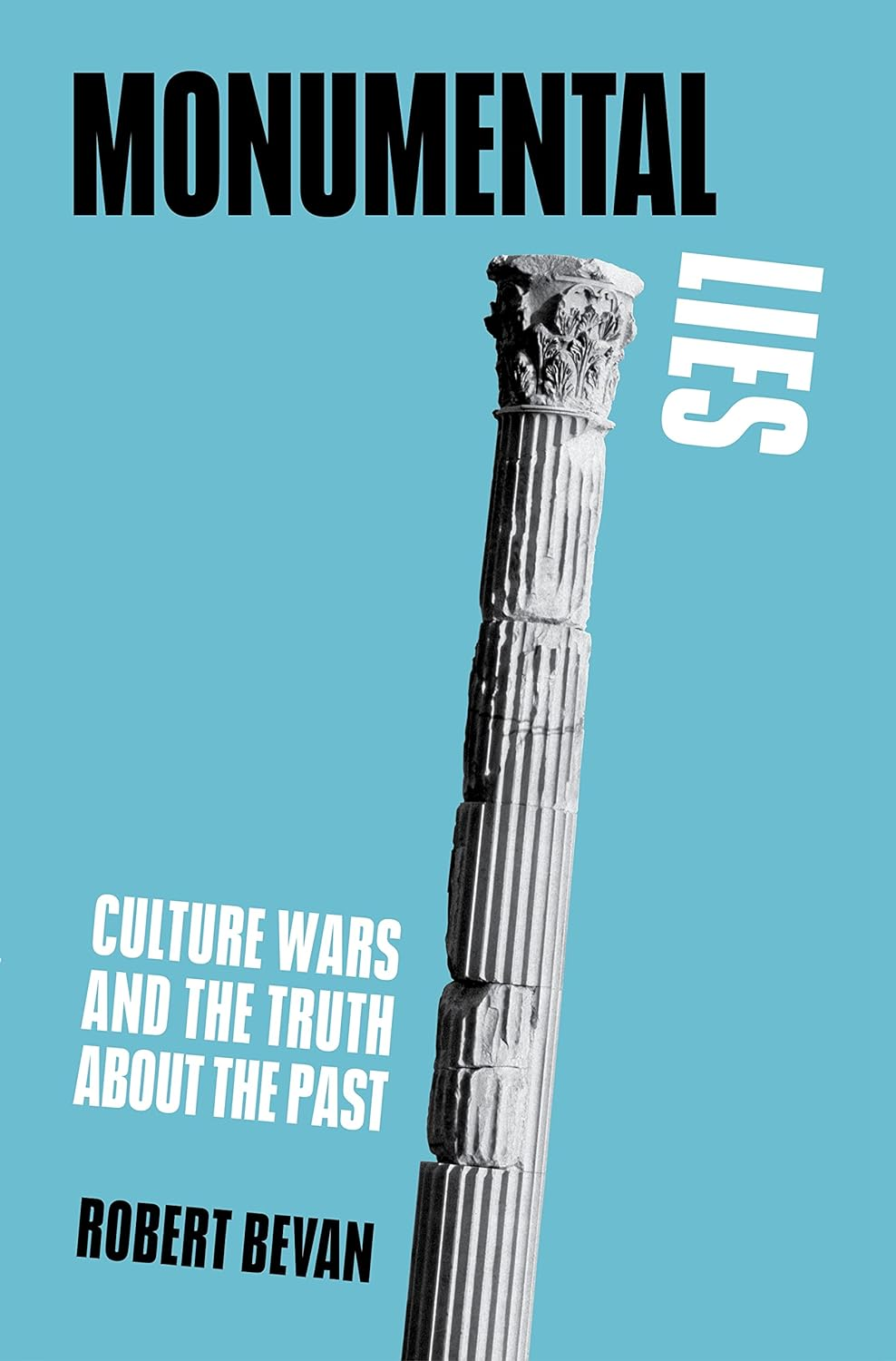Bevan usefully contextualizes current debates around monuments within the larger schema of “culture wars,” in which liberals and conservatives fight to capture the imagination of voters with opposing visions of history, social life, and the country’s political future. Progressives see a past full of evils, such as slavery, that we must escape to achieve an ideal, equitable future. Conservatives appeal to the greatness of a mythologized past, warning that liberals do not understand the perils of discarding it. Monuments, with their visual arguments about just what in our national past should be honored and emulated, are perfect battlegrounds in America’s forever culture wars.
Bevan calls monuments “obvious sites of deceit,” and his book begins from the assumption that the elites who generally pay for public artworks will of course use them to tell a story that benefits themselves. A plaque on the base of the statue in Bristol, England, of the 17th-century merchant Edward Colston is one striking example. The statue illustrates the story of a dolphin that supposedly saved one of Colston’s ships during a storm by inserting itself into a hole below the waterline until the sailors could repair it. The monument does not give any hint that Colston was a slave trader or that his miraculously protected cargo was human. Their lives were spared so that they could be sold.
In June 2020, protesters pulled down the statue and pushed it into Bristol’s harbor. No dolphins were on hand to save Colston from this demonstration. Bevan, however, does not approve of such acts, which he calls the “new iconoclasm.” He argues for the transformation of lying monuments by the addition of signage and artistic interventions, making them into “thinking sites that shame rather than honor,” so that we can change their meaning “without losing altogether the vital evidence of [the] past from the public realm.”
This position, of condemning monuments for their biased versions of history but wishing to spare them from total destruction, has emerged as a common line of argument. But while many such thinkers are content with a vague gesture toward the dangers of “erasing history,” Bevan attempts more systematically to lay out his case for the benefits of transformation.
Bevan wants to preserve monuments for their evidentiary value, like murder weapons stored in an evidence locker. In The Origins of Totalitarianism, Hannah Arendt argued that the ideal totalitarian subjects are not those who truly believe their ruler’s ideological claims but rather those who can be made to believe anything because they are no longer able to tell the difference between true and false. Bevan repeatedly cites this theory, fearing that the removal of monuments “in the name of progress” will pave the way for “a dangerous Humpty Dumpty populism where truth…is whatever you say it is.”
